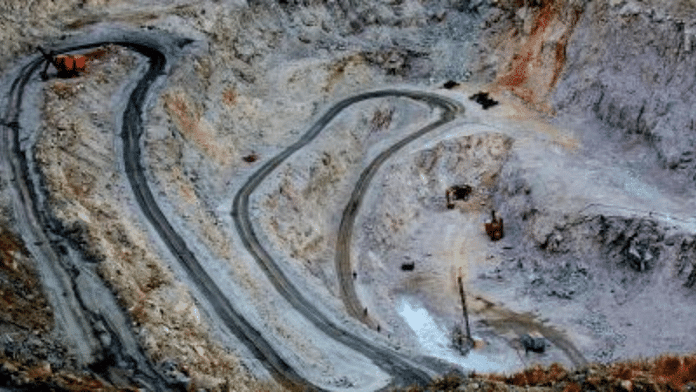India’s electric vehicle transition is under a cloud—not because of customer ambivalence, but because it has run into a great Chinese wall. Our eastern neighbour has imposed export restrictions on rare-earth metals. One of these, neodymium, is a critical element whose alloys produce extremely powerful magnets. These magnets are essential for electric vehicles, whose motors require strong, durable, and long-lasting magnetic components.
Now, the first thing you should know about rare-earth metals is that they’re not actually very rare—some are more abundant than copper. The 17 heavy metallic elements we call rare earths are mainly lanthanides—if you remember your high school Chemistry. The challenge is that, unlike copper or iron, these elements don’t occur in concentrated deposits. That’s why they’re labelled “rare”—not due to scarcity, but because it’s extremely expensive, difficult, and environmentally damaging to extract and purify them.
China, however, managed to dominate the rare-earth supply by overriding environmental regulations, particularly in its sparsely populated northwest. While India does have limited supplies of elements like cerium, erbium, and lanthanum—all vital to modern technology—China still dominates the market. In some rare earths, such as terbium and lutetium, it supplies 98 per cent of the global demand. Both are crucial for manufacturing LEDs.
But the most problematic element for electric vehicles—and even wind turbines—is neodymium. Again, if you recall your high school Physics, you’ll know that strong magnets are vital for motors, or in wind turbines, for generating electricity. Neodymium alloys create exceptionally strong magnets that don’t demagnetise easily. The motors these magnets go into must last 10–15 years—the lifespan of a vehicle—and endure wide temperature ranges and rough usage. These aren’t your average blender magnets.
According to the policy chief of a large Indian automaker, India currently imports around Rs 1,200 crore worth of neodymium magnets for electric vehicles from China. The largest importer is Sona Comstar, whose recent application to import these magnets has been rejected by China.
Also read: Rare earths, their strategic significance, China’s monopoly & why it matters to the Quad
China’s rare earth stranglehold
China’s dominance in rare earths has long concerned many countries, including India and the United States. But it seems no one wanted to do the “dirty work” of mining and refining them—this even applied to lithium, the key component in EV batteries.
So, China didn’t just build global EV giants like BYD—it built the entire ecosystem. Companies like BYD and CATL dominate the battery space and lead most of the innovation and intellectual property development around lithium batteries. And while alternatives for batteries may exist, with certain rare-earths like neodymium, China maintains a stranglehold.
The United States, for example, is now trying to build a supply chain for neodymium, and after China’s export restrictions, India has announced a new policy too. According to a recent Reuters article, India has the fifth-largest rare-earth reserves in the world. However, even in the best-case scenario, it could take three to five years before any new mine becomes operational.
In the meantime, with import applications to China being rejected and companies running low on reserves, several are warning of potential disruptions. Some multinational companies, like Hyundai, claim to have reserves that could last a year or more. Others are beginning to panic. Bajaj and TVS stocks rose when China hinted at easing export restrictions, but with India-China relations still tense post-Doklam, Indian industry clearly cannot rely on China. Until Indian firms are granted import licences, alternative sources must be explored—and that starts with mining at home.
Here’s the irony: we all want clean, green mobility—but mining and refining are anything but clean. I’ve seen open-pit coal and iron mines in Jharkhand and witnessed steel-making up close. Rare-earth mining and refining is even more polluting. But what choice does India have other than to depend on itself? We have to ease mining and refining permissions—there is no other way.
On another note: I mentioned Sona Comstar earlier, and I’d like to offer my condolences to the family and friends of Sunjay Kapur, the company’s CEO, who passed away this Thursday at the young age of 53. I had known Sunjay for many years. He was a knowledgeable and erudite voice for India’s automotive component industry, and led his company into the electric age with foresight and excellence. He will be missed.
Kushan Mitra is an automotive journalist based in New Delhi. He tweets @kushanmitra. Views are personal.
(Edited by Prashant)




